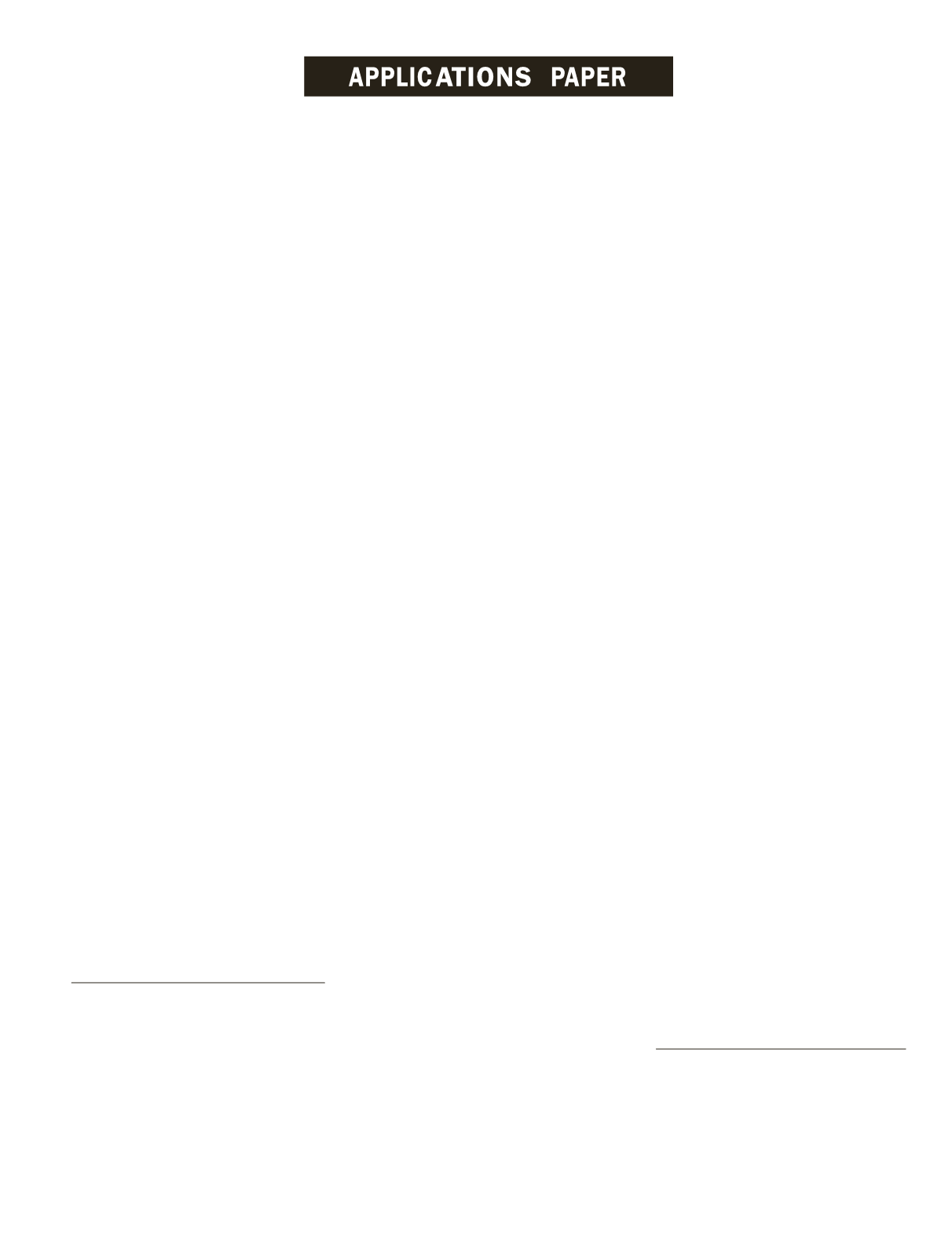
Monitoring Agricultural Soil Sealing in Peri-Urban
Areas Using Remote Sensing
Shiliang Su, Rui Xiao, and Yuan Zhang
Abstract
Soil degradation by expansion-driven sealing increases at an
unexpected rate globally, but the dynamics of agricultural soil
sealing in peri-urban areas remain poorly understood. This
study used aerial photographs to monitor patterns of built-up
land expansion and subsequent agricultural soil sealing be-
tween 1994 and 2006 in peri-urban areas of Shanghai, China.
Results indicated that a total of 152,706.5 ha of agricultural
soils were sealed. In particular, residential land and industrial
land were the major contributors. Buffer analysis demonstrat-
ed that agricultural soils with high proximity to roads and
urban centers are more vulnerable to be sealed. Percentage of
sealed agricultural soils of total agricultural soils had linear
relationships with population growth and economic develop-
ment. These results quantitatively document the impacts of
urbanization on agricultural soil sealing. From a management
perspective, we argue that the protection of agricultural soils
should be integrated with urban planning efforts in China.
Introduction
Urbanization is progressing aggressively worldwide. More
than half of the world’s population is now concentrated
in urban areas (United Nations, 2009). Population growth
in cities stimulates large scale settlement expansion at the
peri-urban interface, leading to dramatic interactions between
subsequent environmental modifications and agricultural
production (Vagneron, 2007; Thapa and Murayama, 2008).
Peri-urban agriculture is an important sector of food supply
to urban people; however, it is subjected to dramatic land use
transformations during expansion (Vagneron, 2007; Thapa
and Murayama, 2008). Many cases document that peri-urban
agricultural soils suffer from various degradation processes,
including compaction, erosion, contamination, declined
productivity and biodiversity, as well as sealing (Diodato and
Ceccarelli, 2004; Chen, 2007; Zeng
et al
., 2008).
Sealing is referred to as the permanent covering of soil
surfaces by expanding built-up land (e.g., paving and hous-
ing) (European Environmental Agency, 2006). Compared to
visible biophysical changes, sealing is a silent form of soil
degradation (Munafò
et al
., 2013). As a common phenomenon
in urbanizing regions, expansion-driven sealing is a principal
cause of soil resource consumption, and is especially severe
in peri-urban areas in proximity to large cities (Scalenghe
and Marsan, 2009; Munafò
et al
., 2010). Soil degradation by
sealing increases at an unexpected rate globally, and several
studies have been conducted to monitor its process and pat-
tern (Imhoff
et al
., 1997; Rodríguez and González, 2007; Wes-
solek, 2008; Salvati, 2013). However, previous studies mostly
focused on large cities in Europe and USA, and the dynamics
of agricultural soil sealing in peri-urban areas remain poorly
understood. Few studies have been published which quan-
titatively analyze the relationship between agricultural soil
sealing and urbanization.
Remote sensing (
RS
) has the capability of detecting built-
up land, as well as monitoring and modeling land-use and
land-cover change during rapid urbanization (Herold
et al
.,
2003; Xian
et al
., 2008; Mohapatra and Wu, 2010; Meng
et
al
., 2012). The areal extent of built-up land as extracted from
remotely sensed data, facilitated by a geographical informa-
tion system (
GIS
), can be combined with digital soil maps to
characterize spatial patterns of soil sealing (Su
et al
., 2011;
Xiao
et al
., 2013a). Imhoff
et al
. (1997) advocated the applica-
tion of
RS
in monitoring impacts of urban expansion on soil
resources. Nevertheless, few studies have integrated high-res-
olution
RS
images,
GIS
, and digital soil data into agricultural
soil management applications. The objective of this study was
to monitor spatial patterns of built-up land expansion and
subsequent agricultural soil sealing between 1994 and 2006 in
peri-urban areas of Shanghai City, China.
Materials and Methods
Study Area
Shanghai, located in the Yangtze River Delta on the eastern
coast (Figure 1), is the most urbanized city of China. Its geo-
graphical extent ranges from 120°52′E to 122°12′E, and from
30°40′N to 31°53′N, covering approximately 6340.5 km
2
. Ter-
rain is flat with elevation averaging 4 m above mean sea level.
The population density (
PD
) is approximately 3,702 persons/
km
2
. Influenced by subtropical monsoon climate, this area
has short spring and autumn seasons, but long summer and
winter seasons. Annual average temperature is 16.4°C, and
rainfall is approximately 1,237 mm. Given climate and topo-
graphic conditions, agricultural soils in Shanghai peri-urban
areas are fertile and productive.
Shanghai is China’s financial and commercial center, and
one of the most rapidly urbanizing cities worldwide during
Shiliang Su is with the School of Resource and Environmen-
tal Sciences, Wuhan University, China, and the Key Laborato-
ry of Geographic Information Systems, Ministry of Education,
Wuhan University, China (
).
Rui Xiao is with the College of Environmental and Resource
Sciences, Zhejiang University, China.
Yuan Zhang is with the Key Laboratory of Geographical In-
formation Science, Ministry of Education, East China Normal
University, Dongchuan Road, Shanghai 200241, P. R. China
(
).
Photogrammetric Engineering & Remote Sensing
Vol. 80, No. 4, April 2014, pp. 367–372.
0099-1112/14/8004–367
© 2014 American Society for Photogrammetry
and Remote Sensing
doi: 10.14358/PERS.80.4.367
PHOTOGRAMMETRIC ENGINEERING & REMOTE SENSING
April 2014
367


